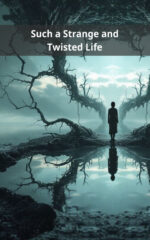Description
Surrealism emerged in the early 20th century as a response to the disillusionment and devastation of World War I. Artists and writers sought to break free from the constraints of reason and logic, which they believed had led humanity to catastrophe. Instead, they turned to the unconscious mind, dreams, and the irrational as sources of inspiration and creativity.
André Breton, the founder and leading theorist of Surrealism, penned the Surrealist Manifesto in 1924, which became the movement’s guiding document. Breton advocated for the liberation of thought and imagination, emphasizing the importance of chance, spontaneity, and the exploration of the subconscious. He believed that true art should transcend the boundaries of conscious control and tap into the raw power of the unconscious mind.
Surrealist artists and writers employed a variety of techniques to access the unconscious and create works that defied conventional norms. They experimented with automatic writing, where they allowed their thoughts and images to flow freely onto the page without conscious censorship. They also engaged in exquisite corpse, a game where each participant added to a composition in turn, without seeing the previous contributions. These techniques allowed them to bypass the conscious mind and produce works that were truly original and unexpected.
Surrealism had a profound impact on the art world. It challenged traditional notions of beauty and representation, opening up new possibilities for artistic expression. Surrealist paintings, sculptures, and collages juxtaposed disparate objects and images in unexpected ways, creating dreamlike and thought-provoking compositions.
Surrealism also made its mark on literature. Surrealist writers experimented with language and form, creating works that were fragmented, disjointed, and full of symbolism. They sought to evoke emotions and sensations rather than convey straightforward narratives. Their writings often explored the subconscious mind, dreams, and the irrational, blurring the lines between reality and imagination.
Beyond art and literature, Surrealism influenced other creative fields, including film, photography, and music. Surrealist filmmakers experimented with dreamlike imagery, nonlinear narratives, and unconventional editing techniques. Surrealist photographers manipulated images and employed photomontage to create disorienting and thought-provoking compositions. Surrealist musicians explored new sounds and techniques, embracing chance and improvisation to create music that defied categorization.
**Dive into the Surrealist Revolution**
This book offers a comprehensive exploration of Surrealism, providing readers with a deeper understanding of its history, key figures, and lasting impact on art, literature, and culture. Through insightful analysis and captivating storytelling, it invites readers to embark on a surreal journey into the unconscious mind, where the boundaries of reality dissolve and the imagination reigns supreme.
If you like this book, write a review!
Language : English
Dimensions : 6 x 9 inches
Pages : 206 pages
Pasquale De Marco stands as a prolific author whose literary prowess knows no bounds. With a passion for storytelling that transcends genres, he has made a name for himself as a versatile writer with the extraordinary ability to captivate readers across diverse literary landscapes. His journey as an author is marked by an insatiable curiosity, a love for the written word, and a relentless commitment to sharing knowledge and experiences with the world.
Pasquale De Marco collaborates with a dedicated team of ghostreaders who assist him in evaluating and editing the manuscripts. His collaborators are not only skilled professionals but also avid readers who purchase and read books as a personal hobby. This unique blend of creativity allows Pasquale to push the boundaries of traditional publishing, making literature more accessible and diverse.






Reviews
There are no reviews yet